Lotus – Nelumbo nucifera Benefits, Side Effects, Research
Lotus has been in use since the times of Sushruta. Lotus stalk was used as a probe in surgical procedures. Its seeds, seed pod, petals, etc are used in Ayurveda treatment. Famous Ayurvedic medicine Aravindasavam is used in treating pediatric disorders.
Botanical name- Nelumbo nucifera Gaertn, (Nymphaea nelumbo Linn), Nelumbium speciosum
Family name- Nelumbonaceae (Kamala kula)
Table of Contents
Vernacular names
Names in different languages:
Hindi name- Kamal
English name- Sacred Lotus
Kannada name – Padma, kamala, Taavare
Telugu name- Tamara Puvvu
Tamil name- Taamarai, Taavarai
Malayalam name- Tamara
Arabian name – Kati Sunnail, Katilun hal
Sanskrit synonyms
Padma, Nalina, Mahotpala, Tamarasa, Saarasa, Sarasiruha, Shreegeha,
White lotus is called Pundareeka
Red lotus is called Kokanada
Blue lotus is known as Indeevara
Varija, sarasa, Kusheshaya – Born in water
Pushkara -Seeds are nutritious
Rajeeva – Flowers have numerous stamen
Pankeruha, Pankaja – born in mud
Shatapatra, Sahasrapatra – Lotus flower having many petals
Aravinda – Having circular petals
Jalaja, Ambhoruha – born in water
Bisa Prasuna – Having flowers with stalks
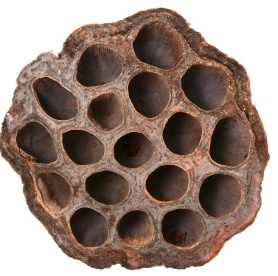
Major chemical constituents
Major chemical constituents of lotus :
Flower- Robinin(a glucoside)
Leaves- Nuciferine(alkaloid); Asmilobine& Lirinidine, Flavonoids,
Lotus Root- Isoliensinine; Neferine, Armepavine(Lotus seed)
Seeds contain 2 – 3 % of oil consisting of palmitic, myristic, oleic and linoleic acid.
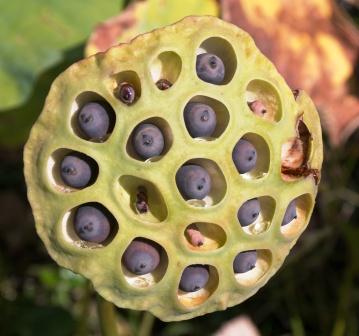
Classical categorization
Charaka –
Varnya – Colour and complexion promoting group of herbs
Mutravirjaniya – Group of herbs that impart proper color to urine
Sushruta- Utpaladi
Ashtanga Sangraha – Mutravirajaniya
Dhanvantari Nighantu, Raja Nighantu – Karaveeradi Varga
Bhavaprakasha – Pushpavarga
Kaiyadeva Nighantu – Oshadhi Varga
Morphology
Aquatic herb with slender stem
Leaves – Concave, membranous, radically nerved with long petiole
Flowers – Solitary, Elliptic, White or pink petals
Fruit – Ovoid
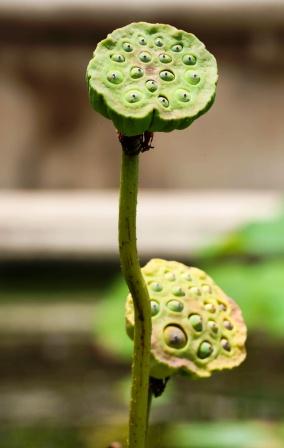
Medicinal properties
Lotus – Medicinal Properties:
Rasa (taste) – Kashaya (astringent), Madhura (sweet), Tikta (bitter)
Veerya – Sheeta – Cold potency
Guna (qualities) – Laghu (lightness), Snigdha (unctuousness), Picchila (stickly)
Vipaka- Madhura – Undergoes sweet taste conversion after digestion.
Effect on Tridosha – Balances Kapha and Pitta Dosha
Pharmacological actions – Hypotensive, Diuretic, Hemostatic, Hypoglycaemic

Sanskrit verse
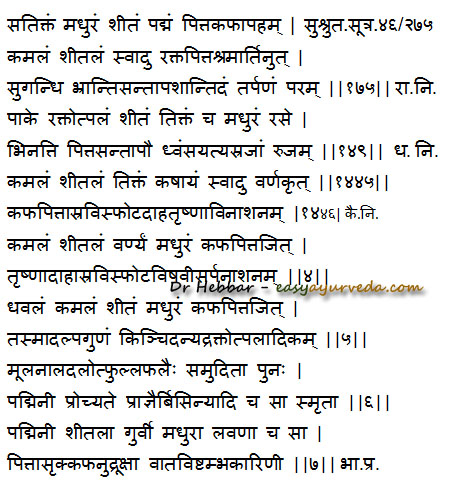
Part used, dosage
Part used:Whole plant (mainly flowers, seeds, lotus stem and tuber), Stamens (Padma Kesara)
Dosage: fresh juice of tuber 10-20 ml
Seed powder 3-6 g in divided doses per day.
Lotus and water lilies are quite similar in use. They are the best
Sangrahika (absorbent, useful in chronic diarrhea, IBS, colitis) and Raktapitta (Bleeding disorders such as Ulcerative colitis, nasal bleeding, menorrhagia). To re-frame the above sentence,
Among the herbs that are useful as absorbent and in bleeding disorders, lotus and water lily are the best.
Lotuses and lilies are astringent and useful in bleeding disorders due to Pitta imbalance.
Varieties
Bh. Pr. Ni 3 types
Sweta
Rakta
Nila
Dh. Ni – 6 types
Pundarika
Saugandhika
Raktapadma
Kumuda
Ksudrotpala
Padmini
Benefits and uses
Satikta – slightly bitter
Madhura, Swadu – sweet
Kashaya – astringent
Sheeta – coolant
Tarpana – Nourishing, calming
Varnya, Varnakrut – improves skin colour and complexion
Indications
Indicated in:
Raktapitta – bleeding disorders like nasal bleeding, Ulcerative colitis and menorrhagia
Shrama – tiredness
Arti – Bodyache
Bhranti – dizziness, psychosis
Santapa – Burning sensation
Visphota – skin boils
Daha – Burning sensation
Trushna – Excessive thirst
Visha – toxic conditions involving bleeding, boils, burning sensation and gastritis
Visarpa – Herpes
Diarrhea, dysentery, ulcerative colitis, IBS with diarrhea
Burning urination
useful in treating diabetes and neuropathy.
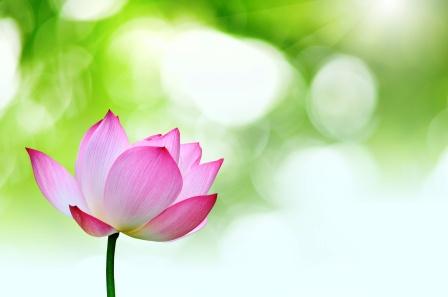
Pundareeka
White lotus is called Pundareeka and the red lotus is called Kokanada.
Sheeta – coolant
Madhura – sweet
Kapha Pittajit – balances Kapha and Pitta Dosha
Red variety is lesser in quality compared to white variety.
Padmini
Lotus with its root, stalk, leaves, and fruit is called Padmini or Bisini. Padmini is
Sheetala – coolant
Gurvi – Heavy to digest
Rooksha – dry
Madhura – sweet
Lavana – salt
Balances Pitta, Kapha Dosha and Rakta (useful in blood vitiation disorders)
Vata Vishtambakarini – causes constipation.
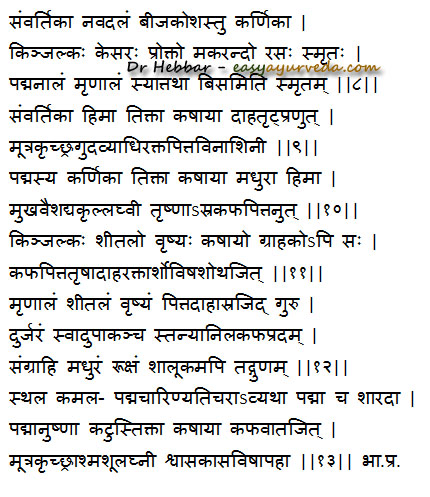
Samvartika
Fresh leaves of Lotus – Samvartika –
Hima – coolant
Tikta – bitter
Kashaya – Astringent
Indicated in:
Daha -burning sensation
Trushna – excessive thirst
Mutrakruchra – Difficulty in urination, dysuria
Guda Vyadhi – piles, fistula
Raktapitta – bleeding disorders
Karnika
Karnika – Lotus seed pod, Seed Head
Hindi name – Kamal Ka chatta
Marathi name – Dhangud, Dapani
Gujarati name – Dheetela
Tikta – bitter
Kashaya – astringent
Madhura – sweet
Laghvi – lightness
Hima – coolant
Mukha Vaishadyakrut – brings clarity to mouth, cleanses mouth
Useful in:
Trushna – excessive thirst
Asra – Blood vitiation disorders
Kapha Pittanut
Lotus seeds
Lotus seed or Makhana is edible and tasty. It is often roasted directly or in an oven.
It is a crunchy and tasty snack that is not junk food. It is crisper and healthier than popcorn as a snack.
It is rich in proteins, fiber, antioxidants, calcium, magnesium, iron, and phosphorus.
It is good for the heart, reduces inflammation in the body and is good for diabetic patients as well.
Lotus seeds – Kamala Beej, Padmabeeja, Kamalaksha
In Hindi, it is called Kamal Gatta
Nutritious, sweet, causes Snehana – oily, Raktasangrahi (improves blood cell count), Garbhasthapaka – promotes safe pregnancy and coolant.
Lotus stamens
Lotus stamens – Kinjalka, Padma keshara
Sheetala-coolant
Vrushya – Aphrodisiac
Kashaya – astringent
Grahi – absorbent
Kaphapittahara
Indicated in
Trushna – thirst
Daha – Burning sensation
Raktarsha – bleeding piles
Visha – toxic conditions
Shotha – inflammatory conditions.
Lotus stalks
Lotus stalk – Mrunala – Kamalanala
Hindi name – Murar
Sheetala
Madhura – sweet taste
Swadu Paka – Undergoes sweet taste conversion during digestion
Vrushya – Aphrodisiac
Pittahara – balances Pitta
Daha, Asrahara – useful in burning sensation and blood imbalance disorders.
Guru – heavy to digest
Durjara – Hard to digest
Stanyaprada – improves lactation
Anila-Kaphaprada – increases Vata and Kapha Dosha.
Lotus rhizome
Lotus rhizome – Kamala Kanda – Shaluka
Sangrahi – absorbent
Madhura – sweet taste
Rooksha – dryness
Quite similar to lotus stalks in qualities.
Because of its Pitta pacifying property, lotus is extensively used in treating psychosis, maniac disorder and bipolar disorders.
Use in surgery, panchakarma
Use of Lotus in surgery and Panchakarma
While doing Swedana – sweating treatment, the eyes and heart region of the patient is covered with lotus leaves and petals. This is because, sweating treatment induces sweat, a pitta activity. The patient may feel excess burning sensation during the procedure especially in the head, eyes and heart region. Lotus being a coolant, negotiates the excess hotness of the treatment.
This method of keeping lotus over the said areas is especially indicated in cowardly patients and in people with Pitta Dosha body type.
Lotus stalk was used as a probe in surgeries for sinuses.
Lotus for health
How to use lotus for health :
To get the above benefits, lotus flower, stem or stalk is made into small pieces. Water is boiled separately. To the boiled water, when it is still in hot condition, the lotus pieces are added and kept for 2 hours. Water: lotus ratio should be 4:1.
After two hours, it is macerated and filtered. This drink preparation method is called Phanta, FYI).
This drink is taken in a (adult) dose of 25 ml once or twice a day.
In high pitta condition, a small piece of jaggery (3- 5 grams) or sugar candy can be added to this drink.
Lotus seeds – used in the above manner is useful in vomiting, menorrhagia and hiccups.
Use in pregnancy
During unexplained bleeding during pregnancy (threatened abortion), Lotus stamens – half a gram per day is administered along with butter.
A drink made out of lotus stamens is also administered for the same purpose.
Lotus for headache
A paste made out of lotus petals is useful to relieve headache. Lotus, along with water lily, cardamom etc is explained by Charaka as a group of herbs, the paste of which is useful to relieve headache. (Reference: Sutrasthana 3/24)
In the same chapter, Charaka includes Sacred lotus in group of herbs – cream, useful in relieving burning sensation (as in diabetic neuropathy) (3/26,27)
Side effects, research
Lotus side effects:
In some, it may cause constipation.
Can be used during pregnancy, lactation and in children.
Research:
Cardi-protective activity of flower extract
Phytochemical profile
Interaction with medicines, supplements
Can this be used while taking Homeopathic medicine?
Yes. This product does not react with homeopathic medicine.
Can this medicine be continued while taking supplements like multivitamin tablets, Omega 3 fatty acids etc?
Yes. Generally, this product goes well with most dietary supplements. However, if you are taking more than one product per day, please consult your doctor for an opinion.
With western
medicines
Seek your
doctor’s advice if you are taking this product along with other western
(allopathic / modern) medicines. Some Ayurvedic herbs can interact with modern
medicine.
If both Ayurvedic and allopathic medicines are advised together, then it is
best to take Allopathic medicine first, wait for 30 minutes and then take the
Ayurvedic medicine.
Ayurveda medicines
Ayurveda medicines with lotus as ingredient:
Aravindasava – General health tonic, appetizer (improving hunger) for children.
Satavaryadi Ghrita – used in the treatment of urinary tract disorders, difficulty in urination etc.
Chandanadi Thailam – Natural coolant oil. It is used to relieve burning sensation, dizziness.
Usirasav – used in treating bleeding disorders, skin diseases etc.
Gopanganadi Kashayam – In Ayurveda water decoction, used in the treatment of Pitta type of fever.
Lotus root
Lotus root, raw
Taste – astringent, sweet, bitter
Properties – light, unctuous
Potency – cold
After digestion taste transformation ( Vipaka ) – sweet
Effect on Doshas
Vata neutral
Pitta balancing
Kapha balancing
Lotus root, cooked, boiled, drained, without salt
Taste – astringent, sweet, bitter
Properties – light, unctuous
Potency – cold
After digestion taste transformation ( Vipaka ) – sweet
Effect on Doshas
Vata neutral
Pitta balancing
Kapha balancing
Lotus root, cooked, boiled, drained, with salt
Taste – astringent, sweet, bitter, salty
Properties – light, unctuous
Potency – not very cold (salt is hot in potency)
After digestion taste transformation ( Vipaka ) – sweet
Effect on Doshas
Vata neutral
Pitta nourishing (salt is Pittakara)
Kapha balancing
Seeds, lotus seeds, dried
Taste – mild sweet, astringent, bitter
Properties – heavy (lotus seeds are light in nature, but becomes heavy as it is dried)
Potency – cold (water plant)
After digestion taste transformation ( Vipaka ) – sweet
Effect on Doshas
Vata nourishing (due to increased heaviness due to drying)
Pitta balancing
Kapha nourishing (as it is heavy)
Seeds, lotus seeds, raw
Rasa – mild sweet, astringent, bitter
Guna – light
Veerya – cold (water plant)
Vipaka – sweet
Effect on Doshas
Vata neutral
Pitta balancing
Kapha neutral
Sthanika Karma (Systemic Action)
External Application – Relieve burning sensation and promote complexion. Highly recommended in the cosmetic industry.
Internal administration-
Nervous system – Promote intellect, calms down nervous system. Indicated in Diseases due to weakened nervous system, fainting, tension related insomnia etc.
Digestive System – Absorbent. Indicated vomiting , excessive thirst, Diarrhea etc.
Circulatory System – Styptic. Indicated in Bleeding disorders including bleeding hemorrhoids, bloody diarrhea, menorrhagia etc. Also beneficial in skin conditions like Erycyphalis, boils etc.
Excretory System – increases urine output, indicated in dysuria, pittaja prameha
Reproductive system – Helps to retain pregnancy. Its stamens along with butter is indicated in uterine bleeding during pregnancy, providing nourishment to growing fetuses.
Satmikarana – Indicated in kids with retarded body growth, It has Anti poisonous effect.
Tvak (Skin) – Improve complexion









6 comments on “Lotus – Nelumbo nucifera Benefits, Side Effects, Research”
Rajendra Kulkarni
Very good article – goes to show the natural way for water purification
Dr J V Hebbar MD(Ayu)
You can use market available lotus stalk / lotus petals as vegetable.
NIRMAL GOEL
THANKS Dr
Kamal
Hi doctor,
In the title How to use Lotus for health, which part of the lotus is used to make the phanta?
Dr J V Hebbar MD(Ayu)
lotus flower, stem or stalk